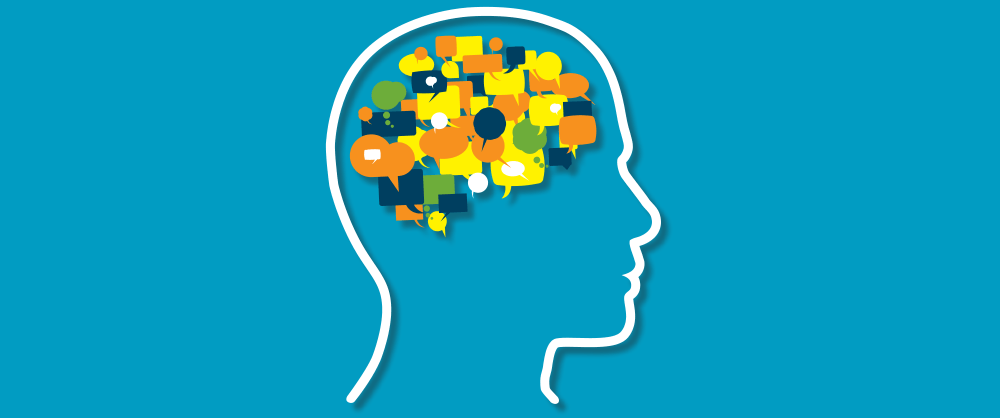Exploring a wide range of current issues in rehabilitation, the March 2018 special issue of the American Journal of Speech-Language Pathology features 16 papers stemming from research presented at the 46th Clinical Aphasiology Conference (CAC). The collection addresses important clinical research questions related to the assessment and treatment of communication impairments associated with aphasia, apraxia of speech, traumatic brain injury, epilepsy, and primary progressive aphasia.
Several articles in this collection examine variables that can affect treatment outcomes in individuals with acquired neurologic communication impairments, including treatment intensity and modality of intervention. A framework is presented to guide the discussion of how neuroimaging technologies might be useful for predicting the extent of recovery of speech and language in individuals with aphasia. The relationship between anomia and verbal short-term memory in the context of an interactive activation model of language processing is explored. Epilepsy-related language symptoms are profiled to help determine appropriate treatment plans. An analysis of paraphasias for three subtypes of primary progressive aphasia is described to identify patterns that may be used to improve phenotyping and diagnostic sensitivity. Analyses of morphosyntactic production, lexical diversity, and novelty of content following Combined Aphasia and Apraxia of Speech Treatment (CAAST) are presented. In addition, a review resulting from a roundtable discussion at the 2016 Clinical Aphasiology Conference summarizes current knowledge and practice regarding the use of visual supports for individuals with aphasia.
The American Speech-Language-Hearing Association is pleased to partner with the CAC to disseminate these valuable scholarly contributions that help to advance the evidence base of the discipline.
The research contained within the special issue of the American Journal of Speech-Language Pathology will be available as a self-study eligible for continuing education credit beginning April 2018. Visit the ASHA CEU Courses section for more information or to view continuing education opportunities associated with previous special issues from the CAC.
Click to learn about Special Issue and Forum requirements, then submit a Proposal Form.
Explore the Special Issue
Ball, A. L., de Riesthal, M., & Steele, R. D. (2018). Exploring treatment fidelity in persons with aphasia autonomously practicing with computerized therapy materials. American Journal of Speech-Language Pathology, 27, 454–463. https://doi.org/10.1044/2017_AJSLP-16-0204
Brown, J., & Thiessen, A. (2018). Using images with individuals with aphasia: Current research and clinical trends. American Journal of Speech-Language Pathology, 27, 504–515. https://doi.org/10.1044/2017_AJSLP-16-0190
Bunker, L. D., Wright, S., & Wambaugh, J. L. (2018). Language changes following combined aphasia and apraxia of speech treatment. American Journal of Speech-Language Pathology, 27, 323–335. https://doi.org/10.1044/2018_AJSLP-16-0193
Dalton, S. G. H., Shultz, C., Henry, M. L., Hillis, A. E., & Richardson, J. D. (2018). Describing phonological paraphasias in three variants of primary progressive aphasia. American Journal of Speech-Language Pathology, 27, 336–349. https://doi.org/10.1044/2017_AJSLP-16-0210
Dutta, M., Murray, L., Miller, W., & Groves, D. (2018). Effects of epilepsy on language functions: Scoping review and data mining findings. American Journal of Speech-Language Pathology, 27, 350–378. https://doi.org/10.1044/2017_AJSLP-16-0195
Gallagher, K., & Azuma, T. (2018). Analysis of story recall in military veterans with and without mild traumatic brain injury: Preliminary results. American Journal of Speech-Language Pathology, 27, 485–494. https://doi.org/10.1044/2017_AJSLP-16-0208
Galletta, E. E., & Goral, M. (2018). Response time inconsistencies in object and action naming in anomic aphasia. American Journal of Speech-Language Pathology, 27, 477–484. https://doi.org/10.1044/2017_AJSLP-16-0168
Gravier, M. L., Dickey, M. W., Hula, W. D., Evans, W. S., Owens, R. L., Winans-Mitrik, R. L., & Doyle, P. J. (2018). What matters in semantic feature analysis: Practice-related predictors of treatment response in aphasia. American Journal of Speech-Language Pathology, 27, 438–453. https://doi.org/10.1044/2017_AJSLP-16-0196
Lee, J. B., & Cherney, L. R. (2018). Tau-U: A quantitative approach for analysis of single-case experimental data in aphasia. American Journal of Speech-Language Pathology, 27, 495–503. https://doi.org/10.1044/2017_AJSLP-16-0197
Minkina, I., Martin, N., Spencer, K. A., & Kendall, D. L. (2018). Links between short-term memory and word retrieval in aphasia. American Journal of Speech-Language Pathology, 27, 379–391. https://doi.org/10.1044/2017_AJSLP-16-0194
Obermeyer, J. A., & Edmonds, L. A. (2018). Attentive reading with constrained summarization adapted to address written discourse in people with mild aphasia. American Journal of Speech-Language Pathology, 27, 392–405. https://doi.org/10.1044/2017_AJSLP-16-0200
Richardson, J. D., Dalton, S. G., Fromm, D., Forbes, M., Holland, A., & MacWhinney, B. (2018). The relationship between confrontation naming and story gist production in aphasia. American Journal of Speech-Language Pathology, 27, 406–422. https://doi.org/10.1044/2017_AJSLP-16-0211
Shuster, L. I. (2018). Considerations for the use of neuroimaging technologies for predicting recovery of speech and language in aphasia. American Journal of Speech-Language Pathology, 27, 291–305. https://doi.org/10.1044/2018_AJSLP-16-0180
Strong, K. A., Lagerwey, M. D., & Shadden, B. B. (2018). More than a story: My life came back to life. American Journal of Speech-Language Pathology, 27, 464–476. https://doi.org/10.1044/2017_AJSLP-16-0167
Wambaugh, J. L., Wright, S., Boss, E., Mauszycki, S. C., DeLong, C., Hula, W., & Doyle, P. J. (2018). Effects of treatment intensity on outcomes in acquired apraxia of speech. American Journal of Speech-Language Pathology, 27, 306–322. https://doi.org/10.1044/2017_AJSLP-16-0188
Webster, J., Morris, J., Howard, D., & Garraffa, M. (2018). Reading for meaning: What influences paragraph understanding in aphasia? American Journal of Speech-Language Pathology, 27, 423–437. https://doi.org/10.1044/2017_AJSLP-16-0213








